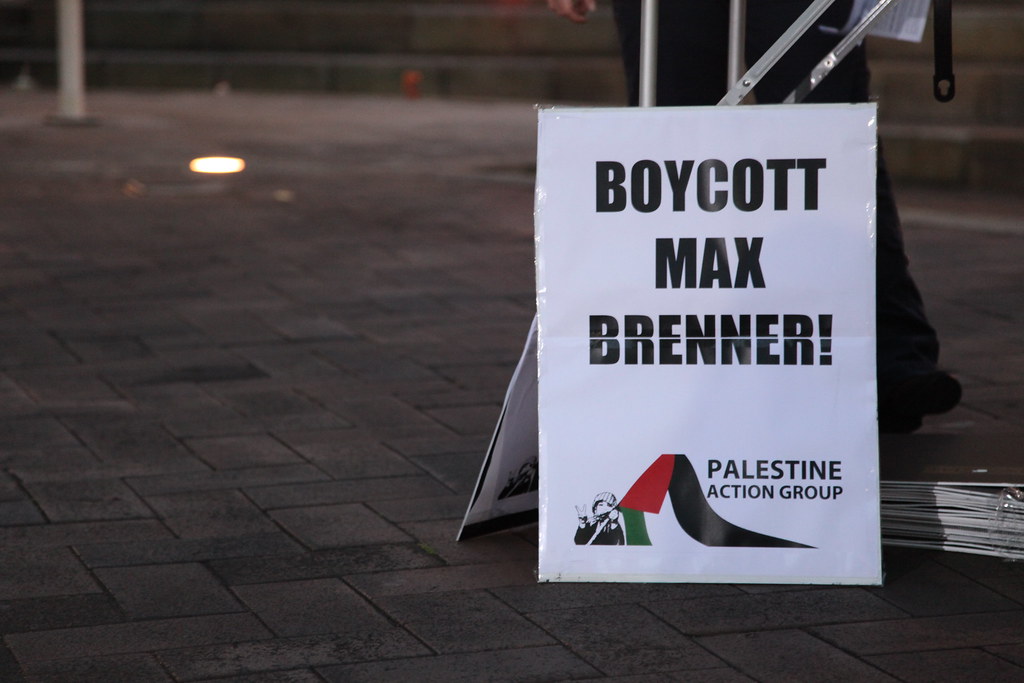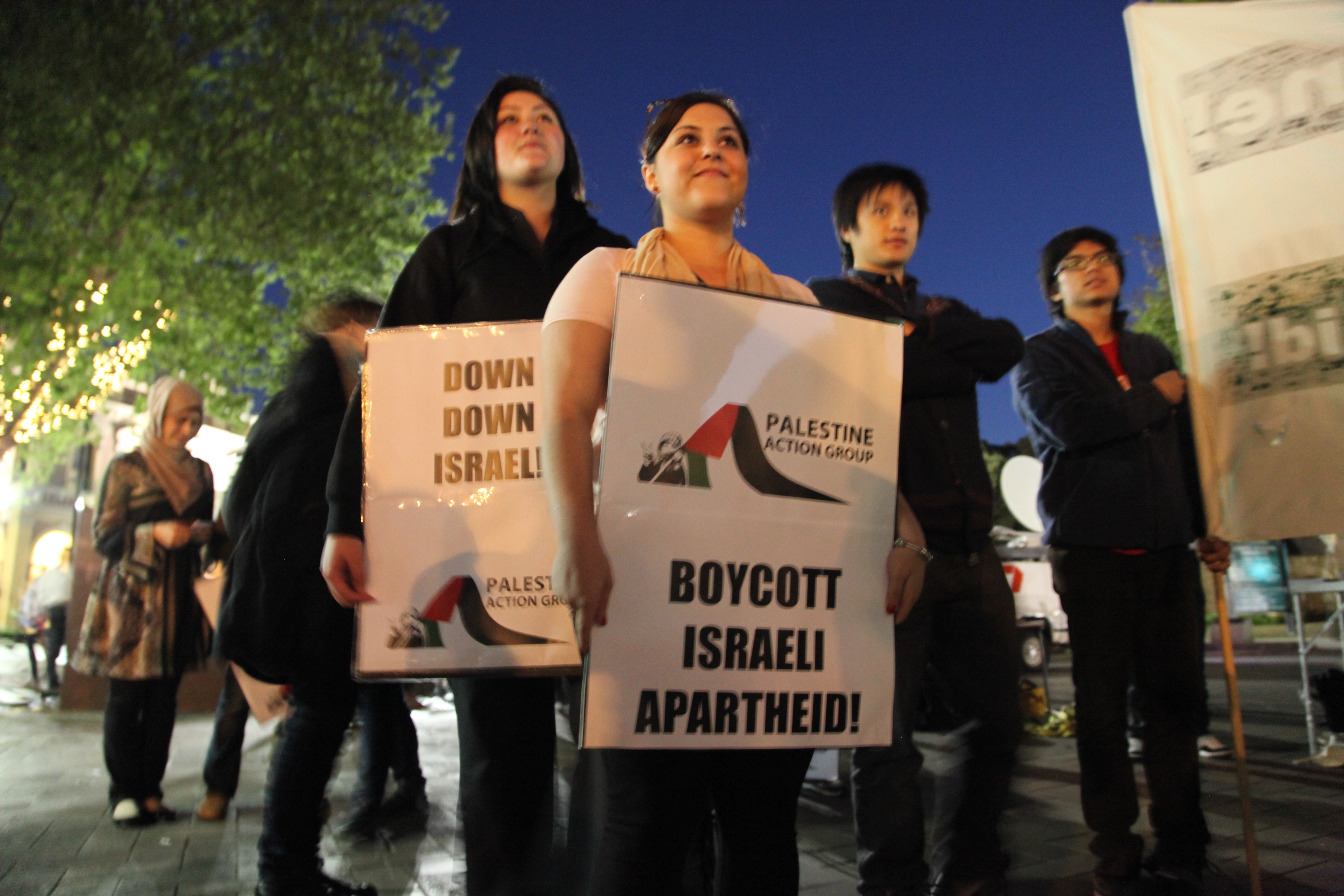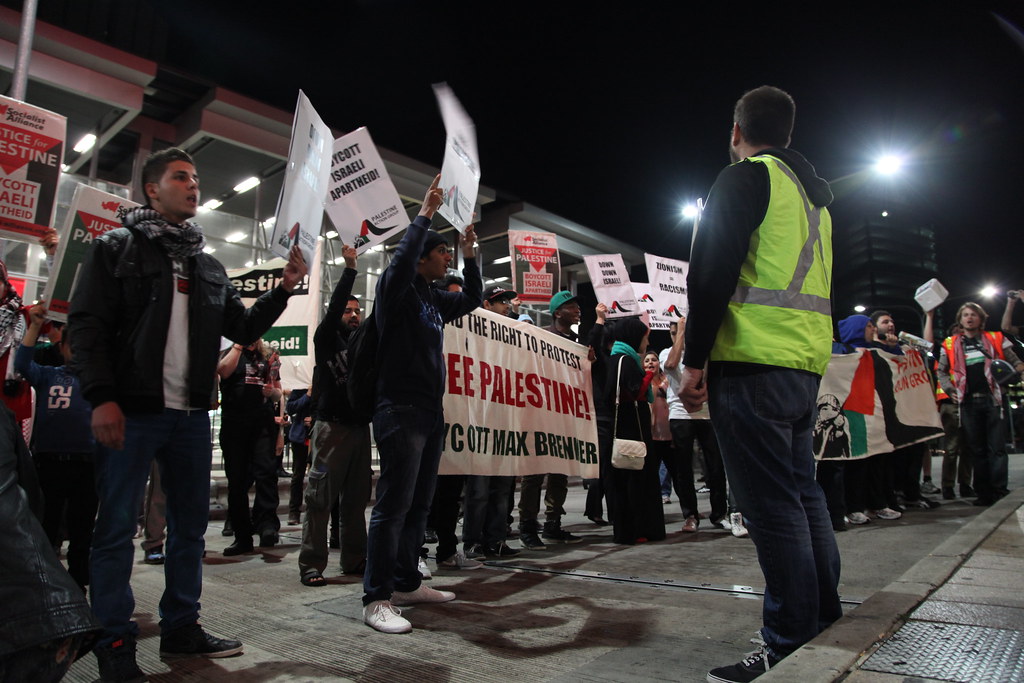This speech was delivered to the 2012 national conference of Resistance. An abridged version of this was published in Green Left Weekly.
Since the 2005 fightback against Howard's
Voluntarity Student Unionism laws, there's been little in the way of sustained education activism at USYD and in Sydney (or across Australia generally, with student unions unwilling to challenge Labor and managing to channel most student energy into lobbying and PR campaigns. But that has changed. Sydney University and staff have launched a widely-supported campaign against cuts – and it's been a real learning experience.
We've learned that our university is being managed in line with the profits-first agenda of the 1% that run the government and the economy. We've learned that under Vice-Chancellor Michael Spence, corporate research partners and “good economic management” take priority over students, staff and society.
But importantly, we’ve also learned we can roll back attempts by university management to implement staff and course cuts. We've learned how we can fight back.
The university of sydney management first signalled there would be restructuring at the end of 2011. However, in early 2012 a "budget black hole" was announced due to lower-than-expected intake of international fee-paying students. Ostensibly due to this black hole, management wanted to cut arbitrarily 120 "underperforming" academic staff, 190 general staff and threatened us with $28 million of non-salary cuts.
Students and staff responded immediately, organising two small rallies in the pouring rain during the university orientation week. Taking heart from the students rising up in Quebec and around the world, students at the University of Sydney began organising and mobilising to defend our staff, our academics, our courses and our quality of education.
We began distributing hundreds of leaflets from information stalls on campus, giving weekly "lecture bashes" in classes to inform fellow students of the campaign's goals, actions and progress, preparing bulletins to challenge the management's PR, and having long and thorough discussions with as many students as possible about the logic behind the cuts and how we could defeat them.
Within the first week we organised a hundred-strong action outside the Vice-Chancellor's office, staging a "die-in" to signal the death of quality education. Then in week 2 700 students and staff rallied outside Spence's office again, passing a motion of no confidence in him and the whole university management. However, the motion and the demands of students fell on deaf ears, so we resolved to build our campaign.
The
Education Action Group formed out of those first initiatives, bringing together a variety of socialists, anarchists, Labor, Greens and general staff & student activists. The EAG went all-out to mobilise for a rally in Week 5, bringing around 1500 people out onto Eastern Avenue to hear from staff members facing the sack, postgraduate students losing their supervisors, etc. This rally was also supported by the National Tertiary Education Union (NTEU); one of the key factors in the success of the campaign sfar has been the important level of unity in action maintained between student-led EAG and the Sydney University branch of the NTEU, with both groups organising individual pickets, actions and meetings, but all key campaign actions being endorsed by both.

After weeks of building, we mobilised far bigger number of students than we'd hoped to, with contingents from the different faculties facing cuts taking part – many of whom had never taken part in any kind of campaign before in their life. At the end of that rally, many of those students joined the EAG's occupation of the Arts Administration building, which descended on the wing of the Quadrangle in force and filled the offices with around 100 people. We held a democratic assembly, the largest we held all semester, resolving that we would take whatever action necessary to defeat the cuts. The occupation lasted for two hours, frustrating the Dean of Arts, who, despite proclaiming his support for student activism, tried to get us to give up the occupation since the cuts are being driven by government funding. Despite this, we resolved to put an ultimatum to the management, which we stuck to the doors of the VC's office when we finished the occupation, resolving to launch a campaign of escalating mass direct action. Out of that first occupation we planned a student walk-out, a mass referendum and a rally taking to the streets in week 9.
For the walk-out, we quite publicly advertising that there'd be an occupation and "siege on management", so security, not suprisingly, knew we were coming, and prepared an over-the-top response. We marched from the Quad lawns to the Provost's office, attempting another occupation; however, the doors were all well guarded, and a few who made their way in through a window were pushed back out through it by undercover police officers and extra private security workers. So instead, we "laid siege" to management, sitting in and blocking all access in or out of the VC's office for the rest of the day.
Students rallied again three weeks later – and in between we two-day referendum campaign on the cuts, which polled almost 4000 students and staff and passed a resounding 97% no vote (and of the 3% voting yes to the cuts, a third also ticked that they'd be attending the next rally against the cuts! - so I guess we also learned people are naturally inclined to tick yes on a referendum...)
The success of the campaign has been due to the broad diversity of actions and tactics we've used to convince students of the need to take action, join the rallies and fight these cuts. The Week 9 rally on May 7 rally at the Senate – one of the largest mobilisation of students on campus to date - would not have been as successful if the EAG hadn't mobilised all-out for the referendum campaign the week before, hitting the footpaths to spread the word, building excitement and opening thousands of conversations about the campaign and the need to confront management.
Around 1000 people turned out for the May 7 rally, marching out on the streets and across to the other half of campus, where the Senate had been scheduled to meet that day. Although the meeting had been rescheduled and the building was empty, Spence had called in the riot police to defend it, and, when students attempted to occupy the building, we were pushed thrown around, dragged away from the doors, and 3 were arrested. One activist who isn't a student at USYD, a well known community and union activist, was also served with a lifetime ban against setting foot on campus.

Ominously, Michael Spence had sent an email to all staff that morning, warning that the protest would likely be hijacked by "outside agitators" with their "own agenda". Ultimately, this hugely over-the-top response had the opposite effect to that intended by management; the footage of students being treated so roughly on their own campus for attempting to protest non-violently might have put some people off the campaign, but it made far more see the riot squad, not students and staff, as the outside agitators.
After the attempt at the occupation was blocked on May 7, the protest kept going; we got word of the alternative Senate meeting venue, and votes to once again hold a "siege on management" and blockaded the building. Management put out in the media that the Senate meeting proceeded as normal, but we are reliably informed that we prevented it from meeting in any real sense for the whole day.
The morning of May 7 it had been announced that the total number of forced redundancies being sent to academics was 23 – with around 50 academics accepting redundancies, around half of the numbers management had been attempting to originally cut. (check & list exact numbers). This wasn't a full victory, but it was a victory nonetheless.
Maintaining and building upon our strong staff-student mobilisations which were united behind clear demands – and not the words or actions of a few – is what ultimately limited the numbers of staff management could cut. We leanred that from other movements around the world like the mass mobilisations of the students in the UK, Chile and Quebec, and from the success of our own struggle at Sydney University.
But the campaign at USYD has sofar this year been almost entirely defensive in nature. There are more aspects to the "change plan" that management hasn't started to implement yet which we have done little about – the cuts to general staff, courses, the recently announced restructuring of the Koori Centre, etc. We've been reacting to management, not getting ahead of their plans. This is the same across many Australian universities, where defensive battles have been sparked; generally, we are on the backfoot.
Several students confronted VC Michael Spence at the NUS Education Conference just a couple of weeks ago – he'd been invited by the Labor students as, since they got funding to hold the conference, they had to have him invite us since it was "his uni". We thought otherwise, and disrupted his speech by claiming the lectern, heckling and holding placards – to which the general response from NUS delegates was, shamefully, frostiness for us and applause for Spence. We've asserted that it's not – but the question is still open for this campaign, and more broadly – what's our vision for the campus, for our education, and how are we going to fight to get it put into place instead of the neoliberal agenda being pushed now?
These cuts are being implemented by a layer of management who have been appointed into a climate of marketised, competitive education, where funding is contingent on "selling your education product" to students. Vice-Chancellors and other figures who might have stood up against government have been the ones implementing the cuts. But the USYD Dean of Arts, Duncan Iverson, wasn't wrong when he told us Federal government funding is what's driving the problem.
I quote from the USYD EAG's semester wrap-up document:
“Self-interested managers are just the tip of the iceberg. There is a bigger logic of competition and education-for-profit that we have to fight against... Australia was the only OECD country to lower its contribution to higher education in the decade between 1995 and 2005...
As Universities are forced to compete for students, grants and rankings, they will find more and more ways to cut our education to the bone. This is why they are cutting staff at the same time as releasing a Budget Briefing for 2012, which outlines that the first goal for next year is to increase the “net operating margin” from $133 million in 2011 to $183 million in 2013, to fund “additional capital expenditure”. We must continue fighting together for a quality education because we still see the poisonous global trends of budget cutting and austerity.”
So while we need to make each campus an organising space against attacks on our education, as students across Australia and the world we also need to take the fight to the government and demand free and good quality public education. We need to link up and unite our struggles to actually challenge the neoliberal model of education.
That is why we should also look at ways to link up with other campaigners globally and across Australia, as well as those asiring due to TAFE cuts already being undertaken by the reactionary governments of austerity on the East coast. This moment could be an opportunity to broaden and deepen our campaigns, forming a broad-based education activist network, unifying campaigns demanding free, quality education for all.
So if you've worried about your education but never thought about being an activist – get informed, learn what we can do. Because when we exercise our collective strength, we are powerful.
What's the next step in this process? The upcoming
EduFactory! conference will be a great opportunity for activists from across Australia to do just that, and may prove an important moment for the direction of our movement.
Be there.







